How to create satisfying lo-fi chords and progressions
Building a lo-fi arrangement which really sticks in a listener's head requires a bit of theoretical thinking

We've previously explored how getting the right drum sounds and the right effects in play when making a lo-fi track are integral, but what about the actual chords and sounds themselves? One of the great things about lo-fi is you can get really creative with the musical elements. And although you’ll typically stick to repeated 8 bar sections there’s plenty of scope for building and developing musically interesting layers.
The sounds themselves vary massively from delicate acoustic guitars and rich electric pianos to gently pumping synthwave pads. Musically, the jazzy side is always welcome as are more interesting chord voicings, so its time to think creative. Let’s take a look at a starter idea and how we can develop this for use in our track.
How to create satisfying lo-fi chords and progressions: A step-by-step guide
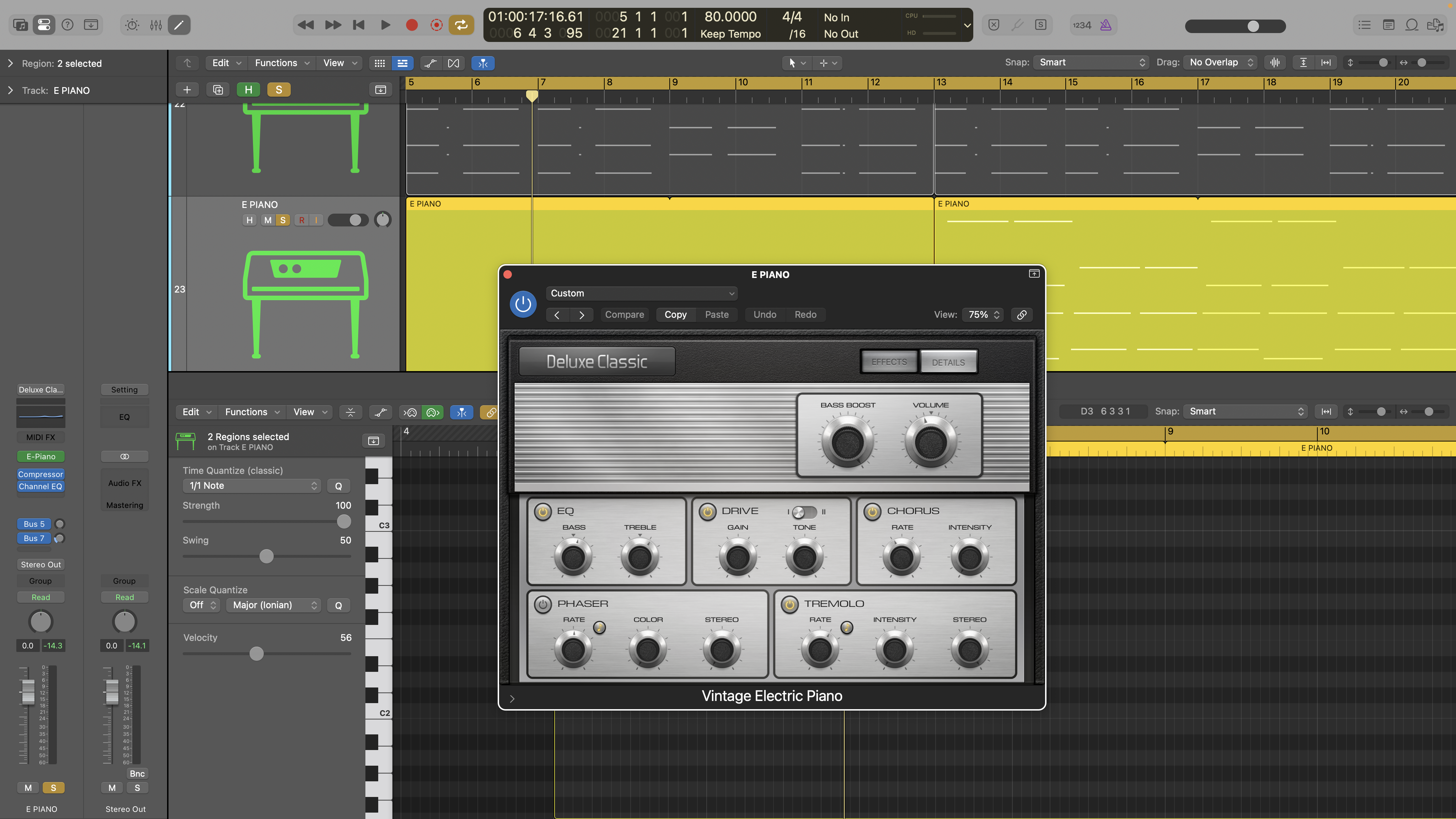
1. We’ve loaded up a basic electric piano instrument in Logic. This provides a clean option for working on the chordal part of our track, but can also be finessed as the track production progresses to deliver a classic lo-fi sound.
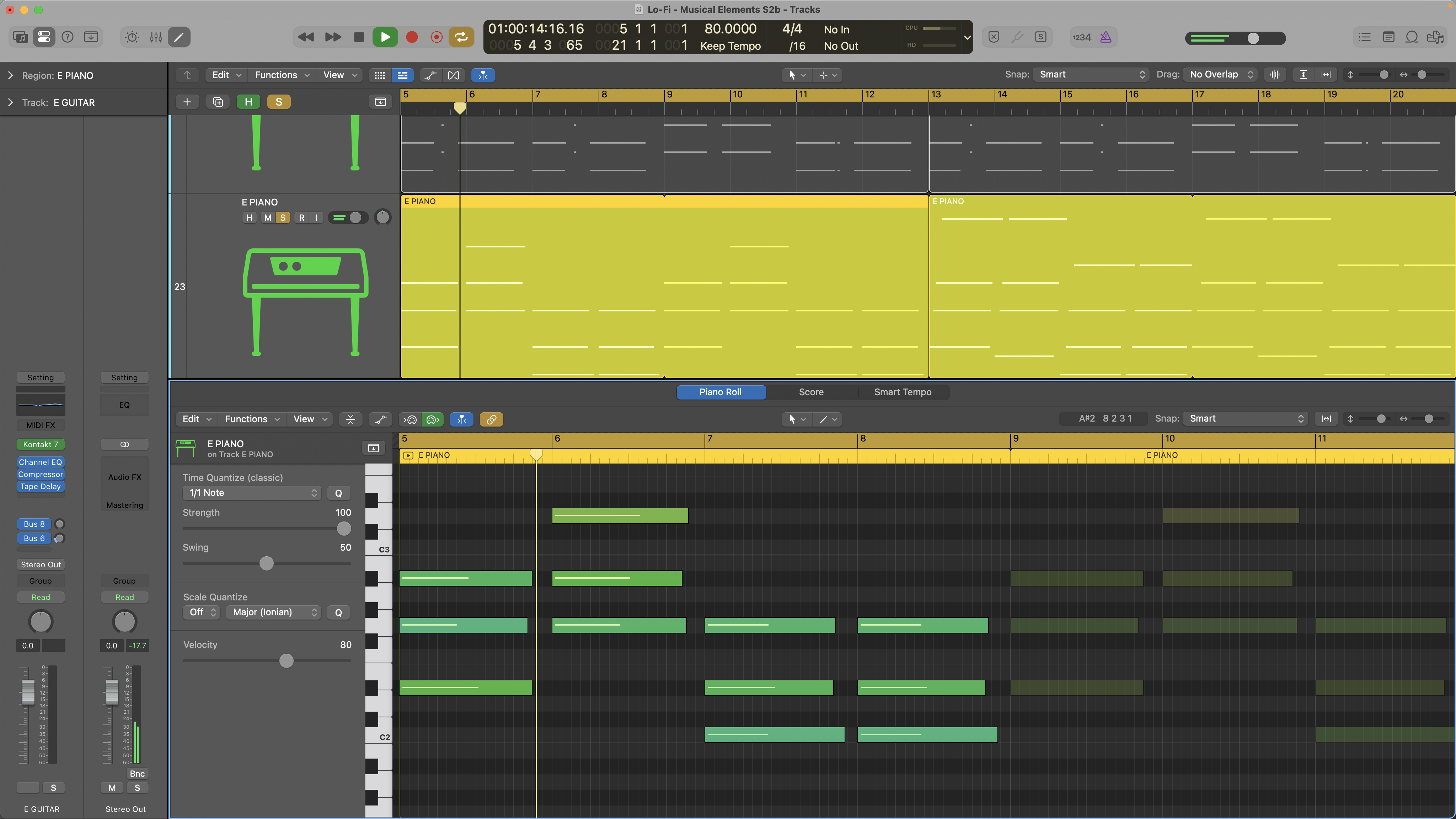
2. We’ve played 3 basic triad chords - Eb for one bar, Gm for one bar and Cm for two bars. The musical idea sounds okay, but with the triads all staying in root position as we move between them, the overall effect sounds a bit clumsy.
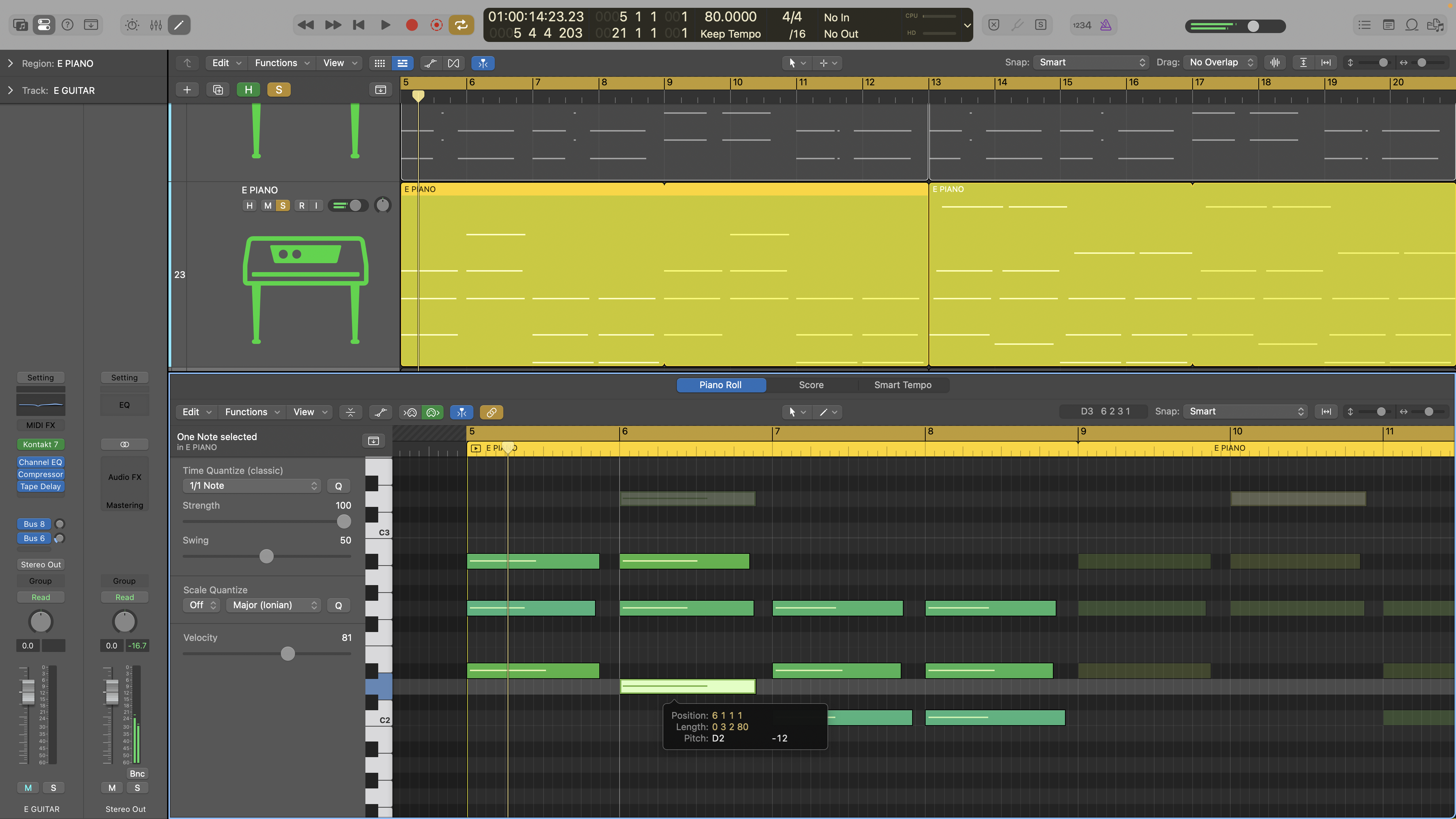
3. By changing the Gm chord to its 2nd inversion - so moving the fifth of the triad down an octave - we get a much smoother chord transition. What’s more, you’ll see the lowest note now moves downwards as the chords play, creating a more flowing progression.
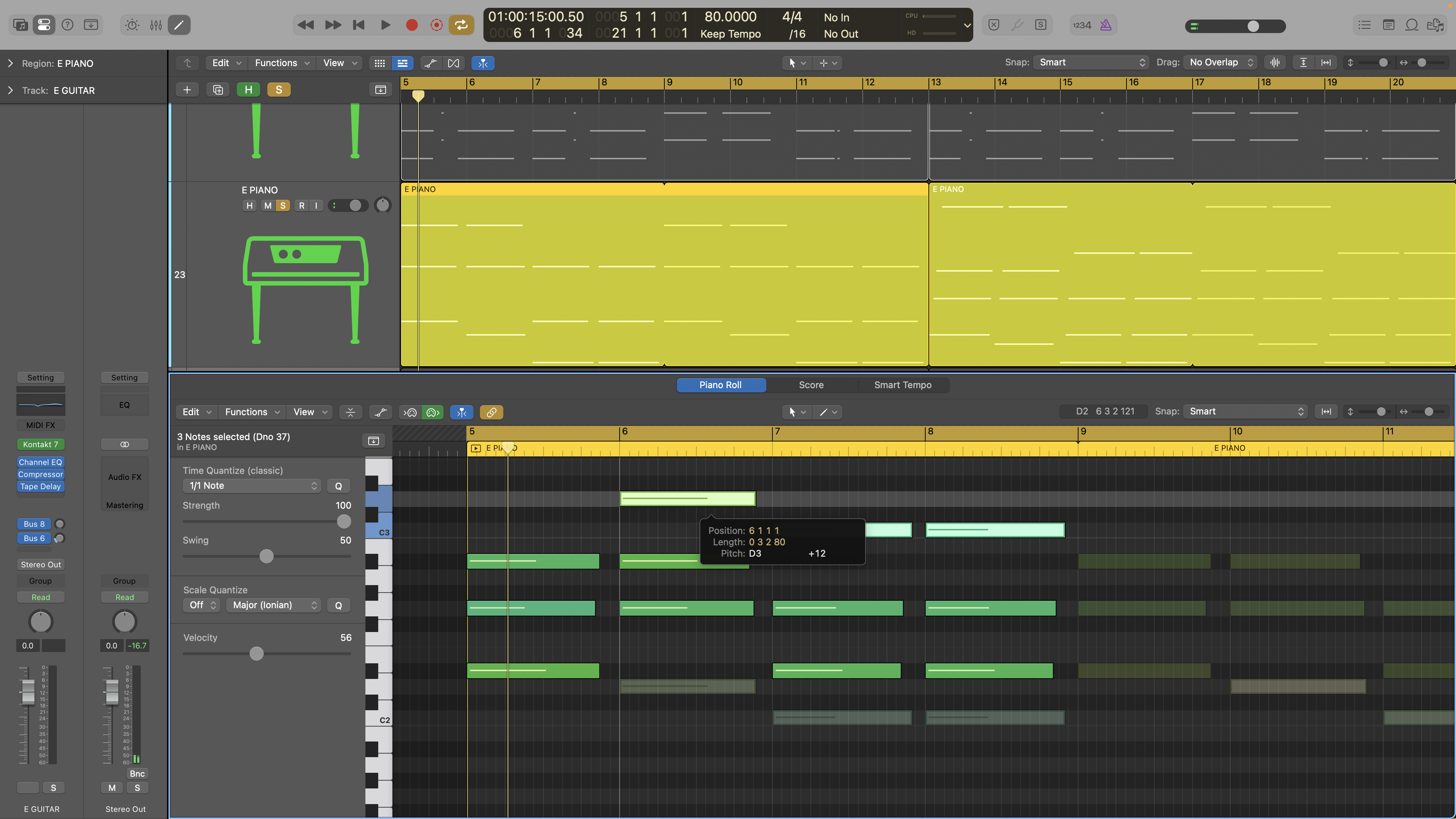
4. We can further develop each triad by repeating the lowest note an octave above. This doesn’t change the type of chords playing, as we are simply repeating notes from the existing triads, but these expanded voicings fill out the sound.
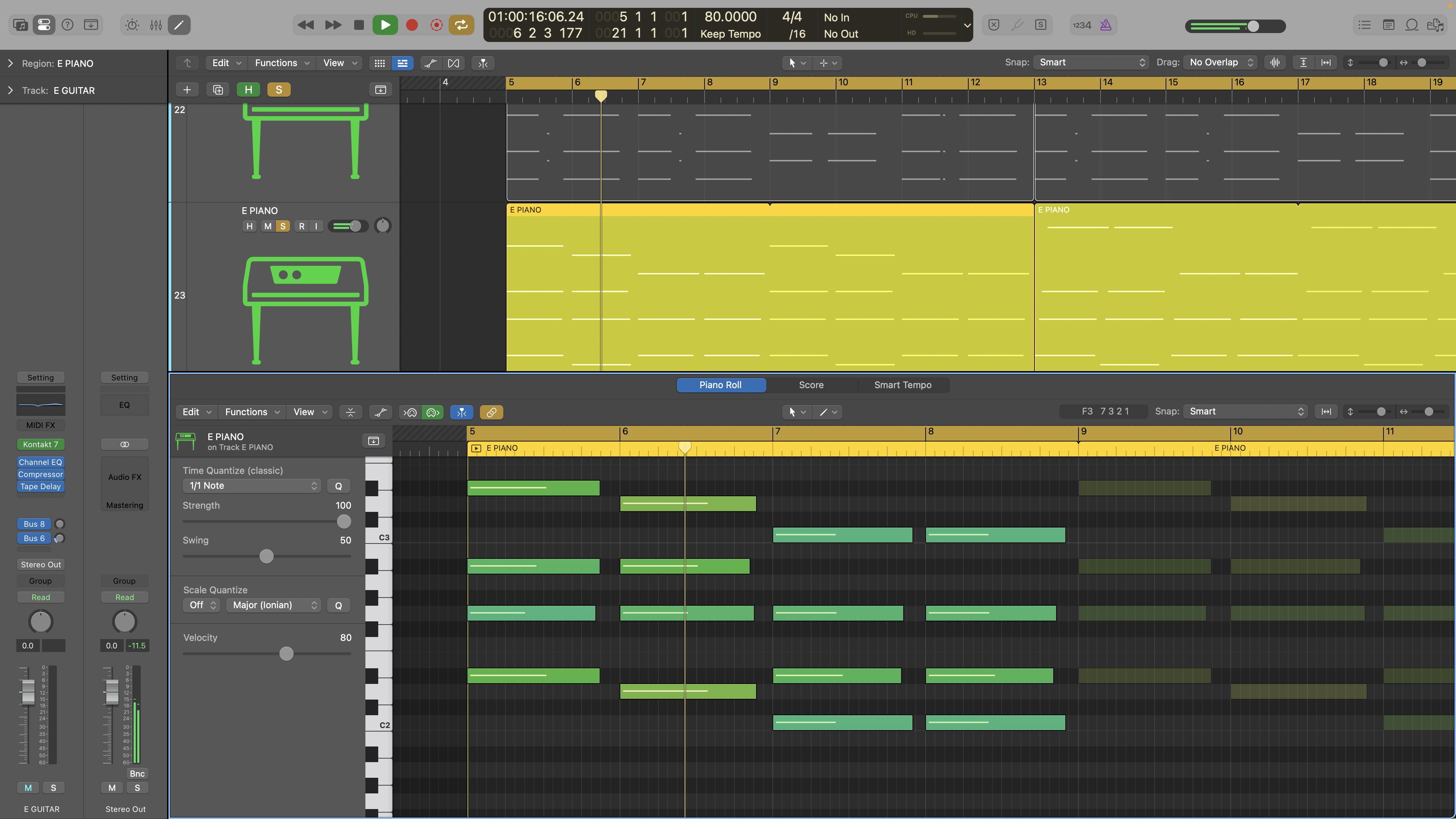
5. We now have something that sounds okay harmonically, but chord blocks like these are not particularly inspiring, and sound programmed rather than played, and it’s the latter we’re trying to achieve in our more organic lo-fi track. A great solution is a spread or broken chord pattern.
Get the MusicRadar Newsletter
Want all the hottest music and gear news, reviews, deals, features and more, direct to your inbox? Sign up here.
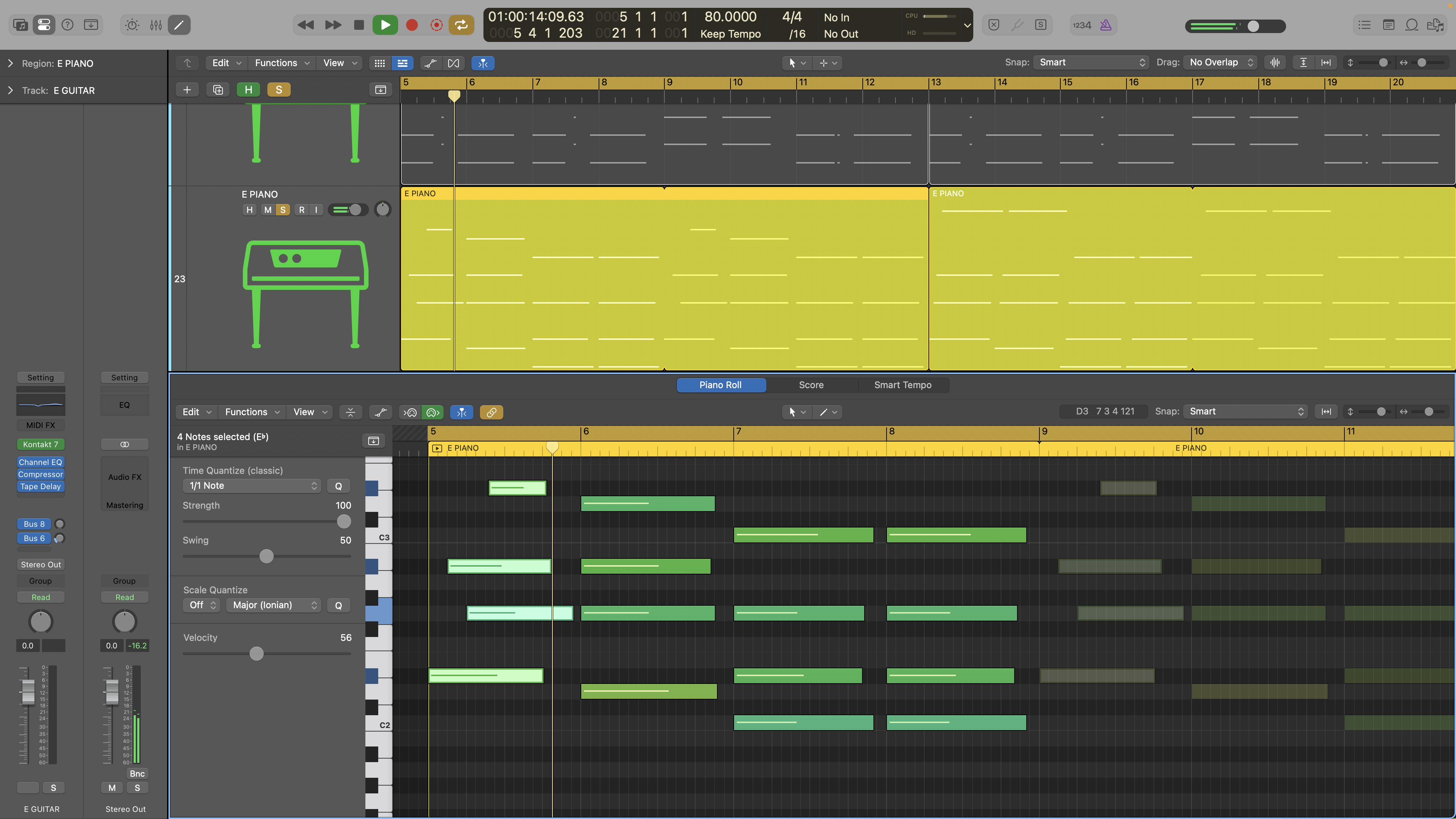
6. If each note in our chord plays in a certain order we can introduce rhythmic interest whilst spelling out the notes involved in our chords. Rather than follow a rigid arpeggio style scale why not try adding a more interesting rhythm.
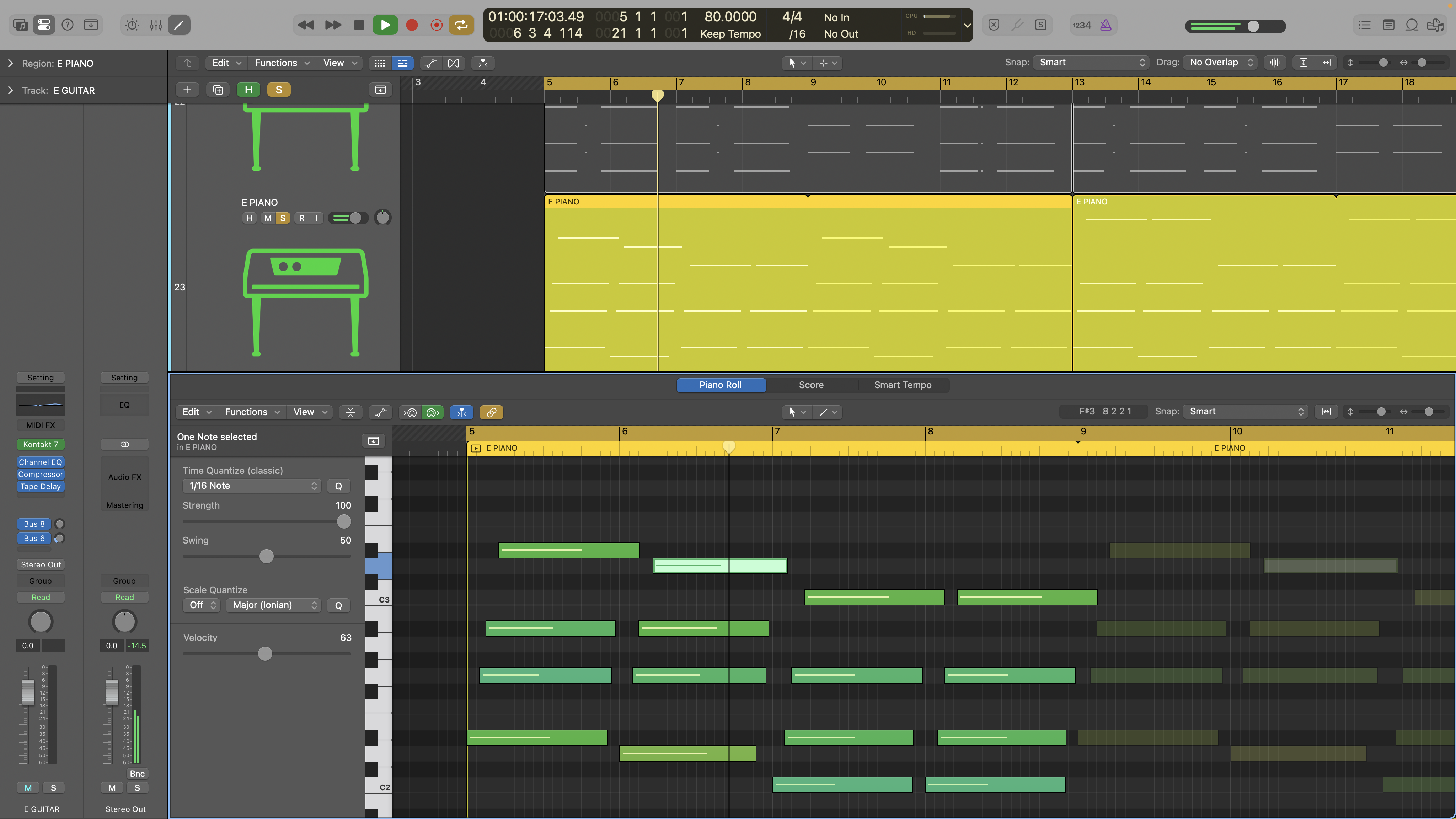
7. A good option is to spread the playback through the first beat of each bar. Here we start on the downbeat, then add some swing so the final note in each chord lands just ahead of beat 2. If your track has beats, you’ll need this to work with them. Here we’re working to the feel of the beats we made in the beats walkthrough.
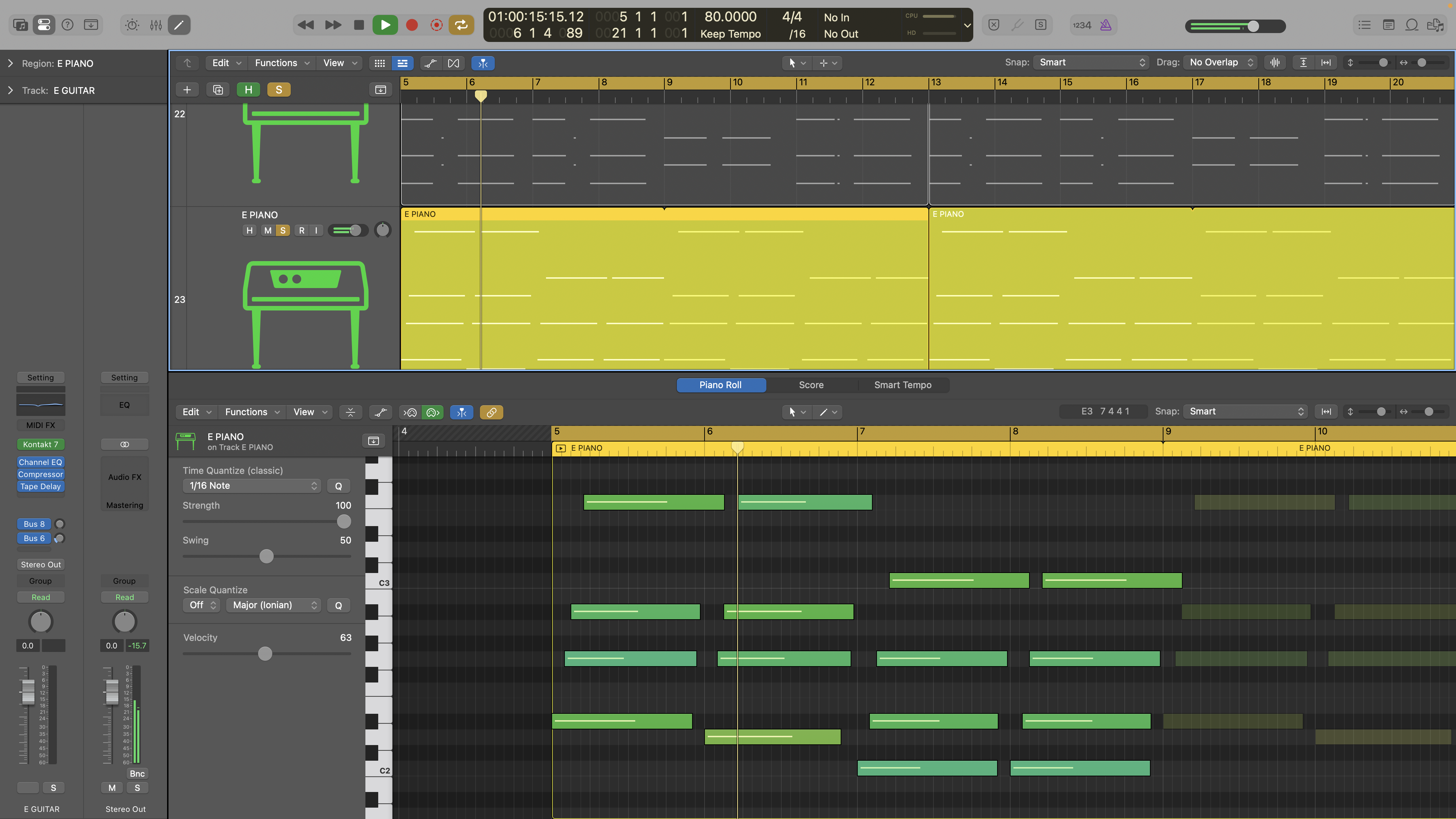
8. It sounds good but we want a little more interest in the chord. By moving the top note of our first chord up 2 semitones we’ve turned it into an added 9th, which creates a more open chord. And if we stay on this note through to the next chord we get a nice smooth transition and more harmonic interest.
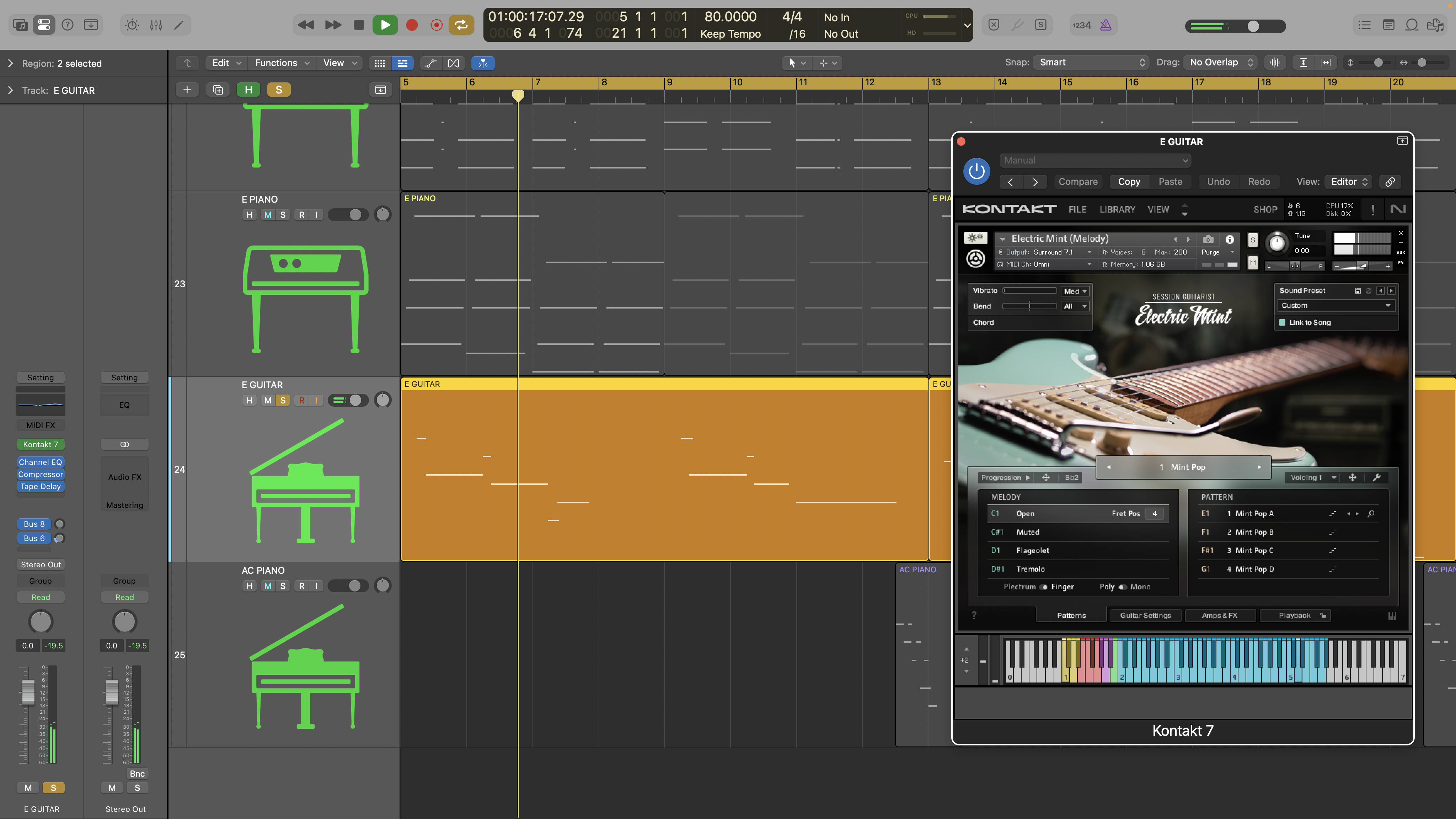
9. As discussed, layers work well and our chord pattern leaves plenty of space to incorporate further sounds and melodies. First up, we’re adding a picked electric guitar. We’ve used a DAW instrument to try out the idea. Once we’re happy with the part, recording this live would add a bespoke sound.
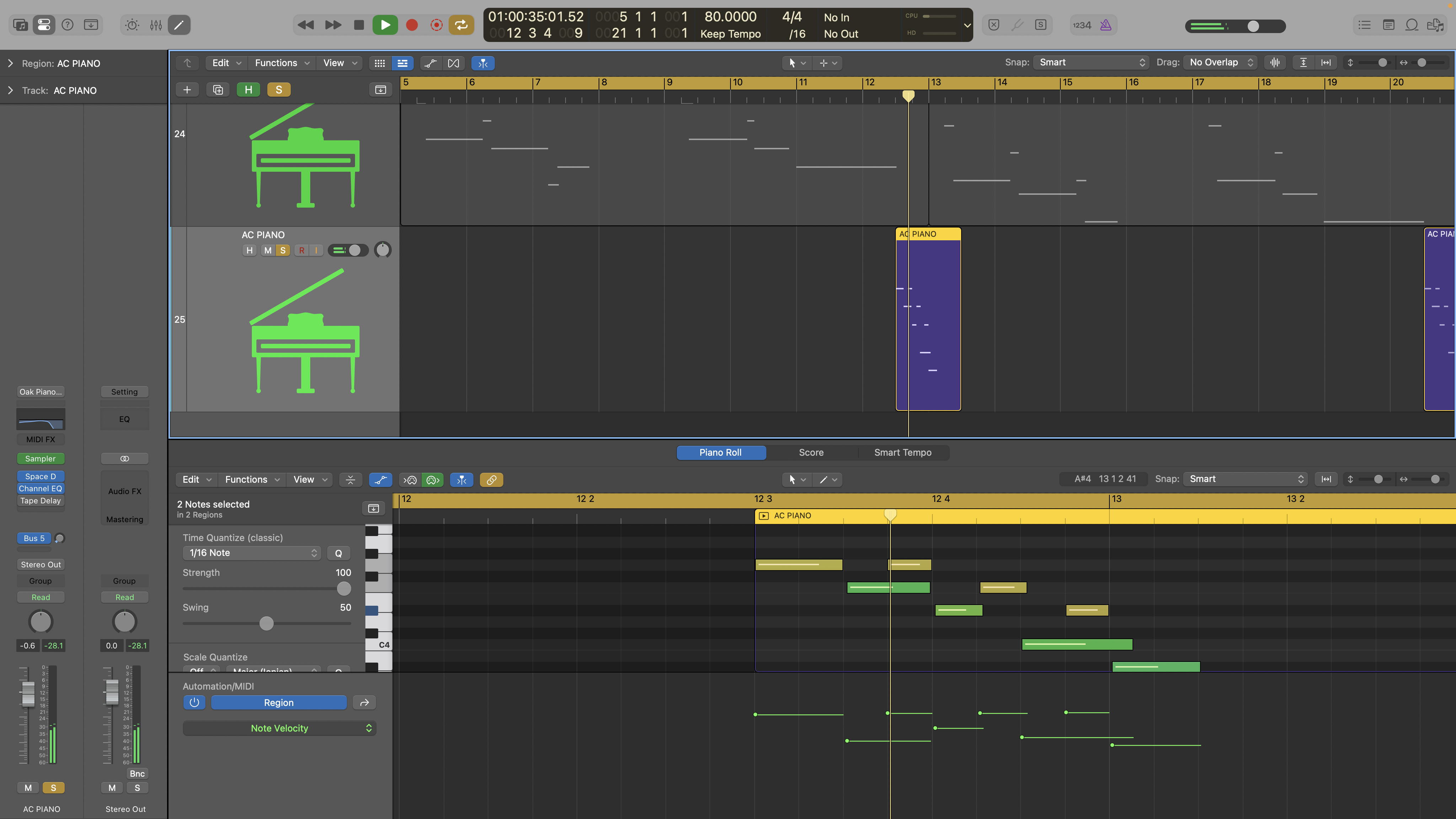
10. Finally, why not use further melodic parts to mark the ends of sections. Here we’ve loaded up a spacey piano sound and programmed a short turnaround part to mark the changes at every 8 bars.
Jon is a London based platinum award winning mixer, producer, composer and club remixer with a diverse CV that spans dance, pop, rock and music for media. He’s also a long term contributor to MusicRadar's music technology tutorials and reviews. Whether working alone or collaborating he usually handles final mixdowns, so you’ll also find MusicRadar peppered with his handy mixing tips.
“How daring to have a long intro before he’s even singing. It’s like psychedelic Mozart”: With The Rose Of Laura Nyro, Elton John and Brandi Carlile are paying tribute to both a 'forgotten' songwriter and the lost art of the long song intro
“The verse tricks you into thinking that it’s in a certain key and has this ‘simplistic’ musical language, but then it flips”: Charli XCX’s Brat collaborator Jon Shave on how they created Sympathy Is A Knife










